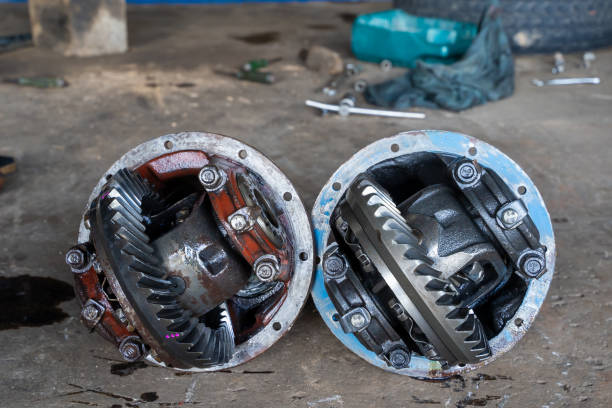The Intricate Dance of Differential Gearing: A Deep Dive into Automotive Performance
Delve into the fascinating universe of automotive mechanics and discover the role of differential gearing in enhancing vehicle performance. This article explores the history, technological developments, and future trends surrounding this often-overlooked yet vital component of the automotive world.

A Journey Back in Time: Understanding the History of Differential Gearing
Differential gearing is not a new concept. The earliest documented usage dates back to the 6th century BC, where the Chinese used it in their chariots to ensure all wheels rotated at the same speed, regardless of the path they traversed. This mechanical marvel found its way into the automotive industry in the late 19th century, when steam-powered vehicles began to dominate the roads. Ever since, differential gearing has evolved to become an integral part of any vehicle, providing improved handling, better fuel efficiency, and enhanced safety.
The Technological Leap: The Evolution of Differential Gearing
The traditional open differential, while effective, had a significant drawback - it could not distribute torque equally between the wheels, leading to slipping and loss of control in certain driving conditions. To counter this, engineers developed the limited-slip differential (LSD), which balances torque distribution, thus providing better traction and control. Modern differentials have further evolved to include electronic LSDs that use sensors and actuators to control torque distribution, offering an unparalleled driving experience.
Riding the Wave of Change: Current Trends in Differential Gearing
The automotive industry is witnessing a shift towards intelligent differentials that can adapt to various driving scenarios. Active differentials, which use advanced algorithms and real-time data to control torque distribution, are becoming increasingly popular. They offer superior control, performance, and safety, making them a preferred choice for high-performance, off-road, and luxury vehicles. Moreover, the rise of all-wheel-drive vehicles has necessitated the development of multi-axle differentials to provide better off-road capabilities.
Impact Analysis: The Role of Differential Gearing in Shaping Automotive Performance
Differential gearing has a profound impact on a vehicle’s performance. It influences the vehicle’s handling, especially during turns, where it ensures the outer wheel travels a greater distance than the inner wheel, providing a smooth and controlled turn. By preventing wheel slip, it enhances the vehicle’s traction, especially on slippery surfaces. Furthermore, by reducing the strain on the drivetrain, it contributes to improved fuel efficiency.
Navigating the Future: The Challenges and Opportunities in Differential Gearing
While differential technology has made giant strides, it also faces challenges. The increasing complexity of modern differentials makes them expensive and difficult to maintain. Moreover, the shift towards electric and hybrid vehicles, which use direct wheel drive systems, poses a threat to the relevance of differentials. However, the demand for better-performing vehicles presents opportunities for the development of smarter, more efficient differentials that can adapt to changing driving conditions.
To conclude, differential gearing, while often overlooked, plays a vital role in enhancing a vehicle’s performance. As technology advances, we can expect to see more innovative differential technologies that will redefine our driving experience.




